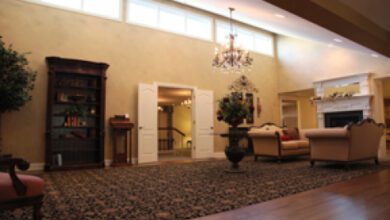How to Fix Red Flame on Gas Stove
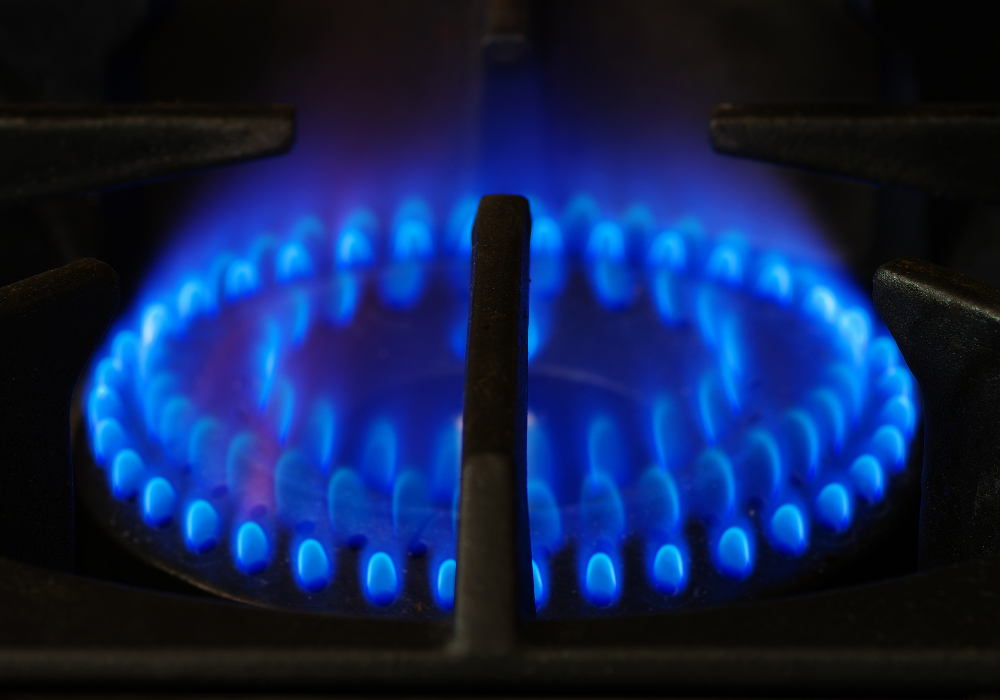
To fix a red flame on a gas stove, adjust the air shutter or clean the burner ports. A red flame on a gas stove can indicate an issue with the air-to-gas ratio, causing inefficient combustion.
By adjusting the air shutter or cleaning the burner ports, you can correct this problem. An improper air-to-gas ratio can lead to incomplete combustion and produce a red flame instead of a desirable blue flame, which is both efficient and safe.
We will guide you through the steps to fix a red flame on a gas stove and ensure optimal performance.
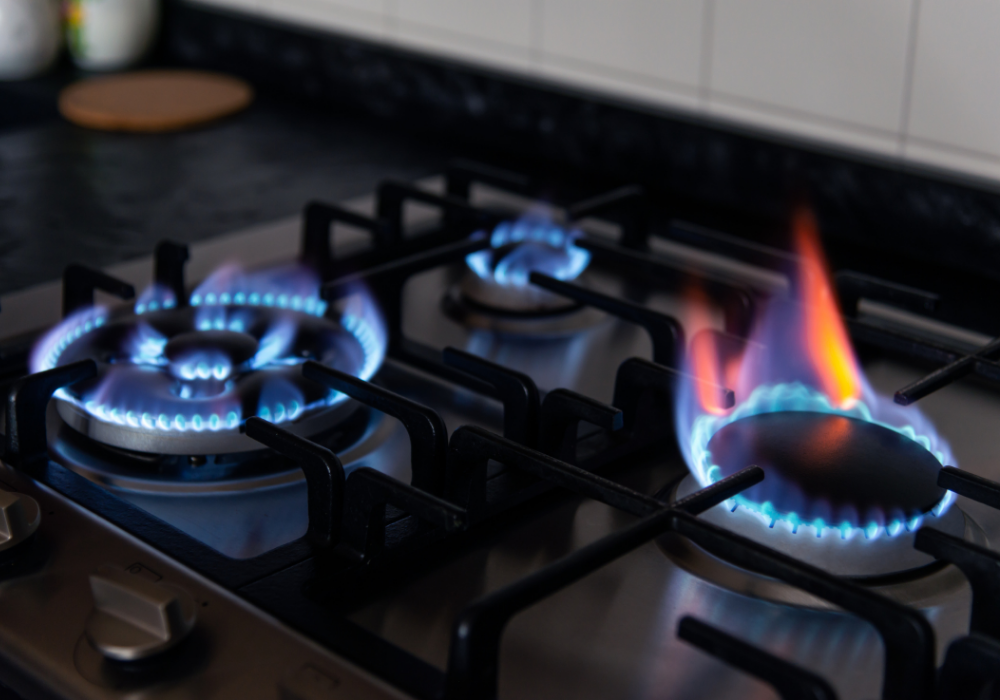
Understanding The Red Flame Issue
A red flame on a gas stove can be a cause for concern. Learn how to fix this issue with simple steps that will help you ensure safety and proper functioning of your gas stove.
When it comes to your gas stove, noticing a red flame instead of the usual blue can be a cause for concern. Understanding the reasons behind this issue will help you tackle it effectively. In this section, we will explore the common causes of red flames on a gas stove and how you can fix them.
Common Causes Of Red Flames
Here are the main culprits behind the red flame issue on a gas stove:
- Incorrect Air-to-Fuel Ratio:
- Insufficient air intake can result in a red flame. This typically happens when the air shutter is not adjusted properly or is partially closed.
- On the other hand, too much air can also cause a red flame. This can occur when the air shutter is fully open or if there is a problem with the gas valve.
- A balanced air-to-fuel ratio is crucial for a blue flame, which indicates complete combustion.
- Dirty or Clogged Burner Ports:
- Over time, gas stove burner ports can accumulate dirt, grime, and food debris, obstructing the flow of gas and air.
- The presence of these blockages can disrupt the combustion process, leading to a red flame.
- Regularly cleaning and maintaining your burner ports will help prevent this issue.
- Gas Pressure Problems:
- Inadequate gas pressure can contribute to a red flame. Low gas pressure can be caused by a faulty regulator or a problem with the gas supply line.
- The insufficient gas flow can result in an incomplete combustion process, leading to a red flame instead of the desired blue flame.
- Contacting a professional to inspect and address any gas pressure issues is recommended.
By addressing these common causes, you can troubleshoot the red flame issue on your gas stove effectively. In the next section, we will provide step-by-step instructions on how to fix each of these potential problems.
Diagnosing The Red Flame Problem
Having trouble with a red flame on your gas stove? Learn how to diagnose and fix this common issue with our step-by-step guide.
Observing The Flame Color
When it comes to troubleshooting issues with your gas stove, observing the color of the flame can provide valuable insights. The flame color can indicate whether the gas stove is operating correctly or if there is an underlying problem causing the red flame.
By carefully observing the flame color, you can diagnose the issue and take appropriate steps to fix it.
Here are some essential points to keep in mind when observing the flame color on your gas stove:
- Normal Flame Colors:
- Blue Flame: A blue flame indicates that the gas stove is functioning properly. It signifies that the proper air-to-gas ratio is maintained, resulting in an efficient and clean-burning flame. The blue color is a result of complete combustion without any impurities.
- Yellow Flame: A yellow flame, on the other hand, could be an indication of an issue. It may suggest incomplete combustion, which can be caused by factors such as a clogged burner or a lack of oxygen. A yellow flame not only wastes energy but can also produce harmful carbon monoxide gas.
- Recognizing Red Flame Issues:
- Uneven Red Flame: If you notice an uneven red flame, where parts of the flame are yellow or orange, it could indicate a problem. This could be due to an obstruction in the burner ports or an incorrect air-to-gas ratio. An uneven red flame is inefficient and may result in incomplete combustion.
- Intense Red Flame: An intense red flame, particularly with a popping sound, can be a cause for concern. It could signify that the burner is dirty or clogged, hindering the flow of gas. This can result in poor combustion and may even lead to a dangerous situation if left unaddressed.
- Sooty Red Flame: A sooty red flame, accompanied by black carbon deposits on the burner or cookware, suggests incomplete combustion and a potential issue. This could be caused by a blocked or dirty burner, inadequate air supply, or even incorrect gas pressure.
Observing and understanding the flame color on your gas stove is the first step in diagnosing potential problems. By recognizing the normal flame colors and being aware of the various red flame issues, you can take appropriate action to fix your gas stove and ensure safe and efficient operation in your kitchen.
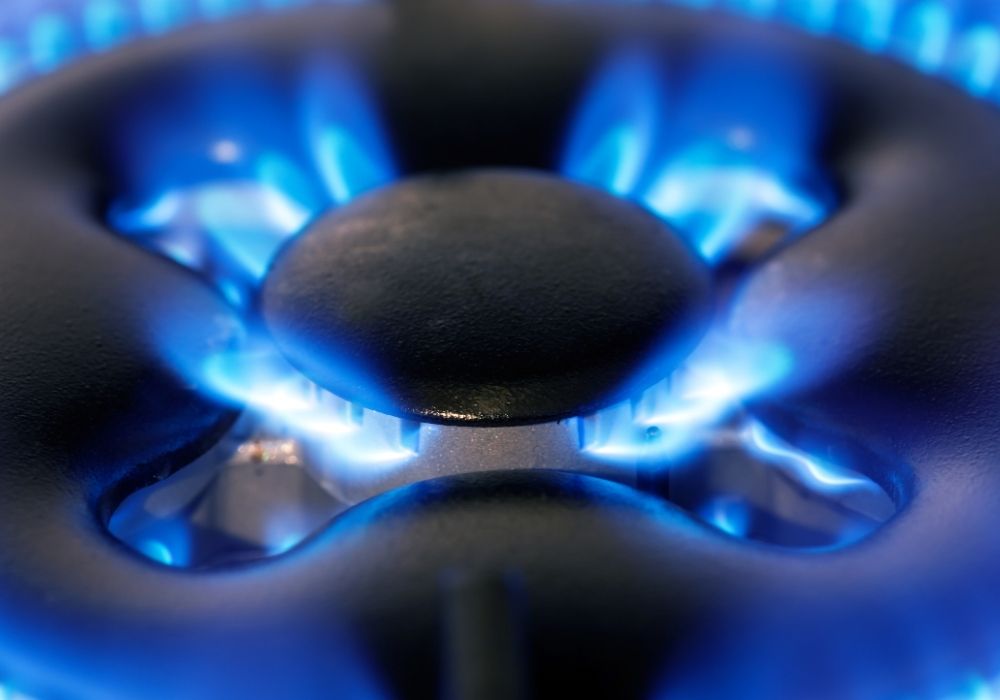
Fixing The Air-To-Fuel Ratio
Fix the red flame on your gas stove by adjusting the air-to-fuel ratio. Achieve optimal combustion by regulating the amount of oxygen in the mixture, resulting in a blue and efficient flame.
Having a gas stove with a red flame can be both frustrating and potentially dangerous. A red flame indicates an improper ratio of air to fuel, which can lead to inefficient burning and the release of harmful gases. However, there are steps you can take to fix the air-to-fuel ratio and ensure that your gas stove is functioning properly.
In this section, we will discuss how to adjust the air shutter and check for any blockages in the air vents. Let’s dive in!
Adjusting The Air Shutter
Adjusting the air shutter is a crucial step in fixing the air-to-fuel ratio on your gas stove. The air shutter allows you to control the amount of air entering the burner, which directly affects the flame color and size. Here are the steps to properly adjust the air shutter:
- Start by turning off the gas supply to the stove and allowing it to cool down completely.
- Locate the air shutter, which is typically located near the burner. Refer to your stove’s manual if you’re unsure about its exact location.
- Use a screwdriver to loosen the screw that holds the air shutter in place. This will allow you to freely adjust the position of the shutter.
- Gradually open or close the air shutter until you achieve a blue flame with a yellow tip. A blue flame indicates that the air-to-fuel ratio is balanced.
- Once you have adjusted the shutter, tighten the screw to secure it in place.
- Turn on the gas supply and ignite the burner to check if the flame is now blue and stable.
Remember, the goal is to achieve a blue flame with a yellow tip, as this indicates optimal combustion and efficiency.
Checking For Blockages In The Air Vents
Blockages in the air vents can also cause an improper air-to-fuel ratio on your gas stove. It’s important to regularly inspect and clean the air vents to ensure proper airflow. Here’s how you can check for blockages and clear any obstructions:
- Begin by turning off the gas supply and allowing the stove to cool down.
- Carefully remove any grates or burner covers to access the burner assembly.
- Locate the air vents surrounding the burner. These vents are usually small holes or openings on the side or underneath the burner.
- Inspect the vents for any debris, dust, or food particles that may be blocking the airflow. A flashlight can be helpful in identifying any blockages.
- Use a small brush or a can of compressed air to gently remove any obstructions from the vents. Be thorough in clearing away all debris.
- Once the vents are clean, reassemble the burner covers and grates.
- Turn on the gas supply and ignite the burner to check if the flame is now blue and consistent.
Regularly cleaning the air vents will help maintain a proper air-to-fuel ratio and ensure optimal performance of your gas stove.
Cleaning The Burner Ports
In addition to adjusting the air shutter and clearing blockages from the air vents, it’s essential to clean the burner ports. Over time, these ports can become clogged with grease or food residue, affecting the flame quality. Follow these steps to clean the burner ports:
- Turn off the gas supply and allow the stove to cool down completely.
- Carefully remove the burner assembly from the stove, following the instructions in your stove’s manual.
- Inspect the burner ports for any visible debris or clogs. Use a soft, clean cloth to wipe away any dirt or grease.
- For stubborn residue, you can use a small brush or a pin to gently dislodge the clog. Be cautious not to damage the ports.
- Once the ports are clean, carefully reassemble the burner assembly into the stove.
- Turn on the gas supply and ignite the burner to check if the flame is now blue and steady.
Regular maintenance, including cleaning the burner ports, will help keep your gas stove functioning optimally and ensure a proper air-to-fuel ratio.
By following these steps to adjust the air shutter, check for blockages in the air vents, and clean the burner ports, you can effectively fix the air-to-fuel ratio on your gas stove. Remember to prioritize safety and consult your stove’s manual for specific instructions.
Enjoy cooking with a beautiful, blue flame!
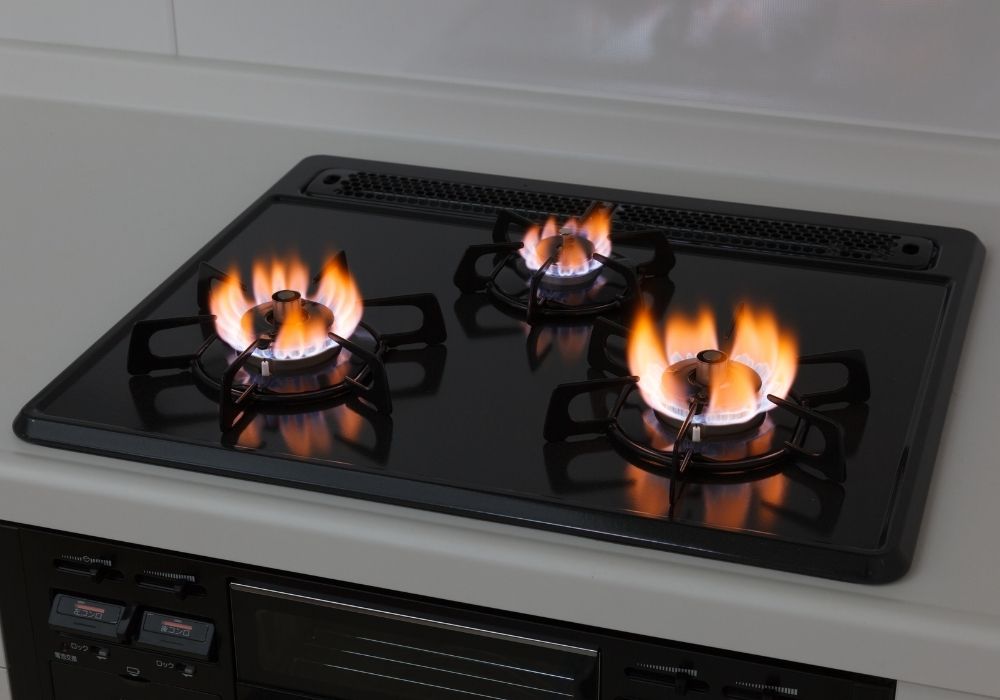
Addressing Dirty Or Clogged Burner Ports
To fix a red flame on a gas stove, you can address dirty or clogged burner ports. Clean them thoroughly to ensure proper gas flow and a blue, steady flame.
Identifying Dirty Or Clogged Burner Ports
Dirty or clogged burner ports can cause issues with the flame on your gas stove, leading to inefficient cooking and potential safety hazards. By addressing these blockages, you can ensure proper functioning and optimal performance of your stove. Here are some tips to help you identify, inspect, and clean dirty or clogged burner ports.
Inspecting The Burner Ports
Before diving into the cleaning process, it’s important to inspect the burner ports to determine if they are indeed dirty or clogged. Here’s how you can go about it:
- Remove the grates and burner caps from the stove.
- Take a close look at the small holes on the burners where the flames come out.
- Look for any signs of debris, grime, or buildup that may be obstructing the flow of gas.
Signs Of Blockages
There are a few signs that can indicate the presence of blockages in your burner ports. Keep an eye out for the following:
- Uneven or distorted flames: If the flames on your gas stove are irregularly shaped, too high, or too low, it could be a sign of blockages in the burner ports.
- Slow ignition: If it takes longer than usual for the burner to light up, it may be due to restricted gas flow caused by buildup in the ports.
- Weak or yellow flames: A weak or yellow flame instead of a strong blue flame can be an indication of clogged burner ports.
Cleaning The Burner Ports
To restore the proper functioning of your gas stove and ensure a consistent, blue flame, you’ll need to clean the burner ports. Here are a couple of methods you can use:
Using A Wire Brush
- Gently scrub the burner ports with a wire brush to dislodge any debris or carbon buildup.
- Make sure to cover all the ports and use a back-and-forth motion to remove the blockages.
- Be careful not to apply excessive force, as it may damage the ports.
Removing Debris With Compressed Air
- If the wire brush doesn’t fully clean the ports, you can try using compressed air.
- Insert the nozzle of the compressed air canister into the burner ports.
- Give a few quick bursts of air to dislodge any remaining debris or blockages.
Remember, regular maintenance and cleaning of the burner ports will help ensure optimal performance and extend the lifespan of your gas stove. By following these steps, you can address dirty or clogged burner ports and enjoy a properly functioning gas stove for all your cooking needs.
Resolving Gas Pressure Problems
Experience frequent red flames on your gas stove? Discover effective solutions and simple fixes to resolve gas pressure problems and ensure a safe and efficient cooking experience.
If you notice a red flame on your gas stove, it could be a sign of gas pressure problems. Gas pressure plays a crucial role in ensuring the proper functioning of your stove and ensuring a blue flame. In this section, we will guide you through the process of resolving gas pressure problems.
By following these steps, you can get your gas stove back to working efficiently.
Checking The Gas Regulator
Before diving into the gas pressure inspection, it’s important to know where the gas regulator is located. This component is responsible for controlling the flow of gas from the supply line to the stove. If there are any issues with the regulator, it can lead to gas pressure problems.
Locating The Gas Regulator
To locate the gas regulator, follow these steps:
- Start by turning off the gas supply to your stove using the shut-off valve.
- Look behind your stove and find the pipe that connects to the stove’s gas line.
- The gas regulator is typically located along this pipe, but it may vary depending on the stove model.
Steps To Inspect The Gas Regulator
Once you have located the gas regulator, you can start inspecting it for any potential issues. Follow these steps to check the gas regulator:
- Inspect the regulator for any visible damages or leaks.
- Ensure that all connections are secure and tight.
- Look for any signs of corrosion or rust on the regulator or surrounding areas.
- Check if the regulator’s adjustment screw is properly set.
Adjusting The Gas Pressure
If you have determined that the gas pressure is the culprit behind the red flame, you may need to adjust it. Here’s how you can do it:
Using A Gas Pressure Gauge
To accurately measure the gas pressure, you will need a gas pressure gauge. This tool allows you to determine the current pressure and make adjustments as needed.
How To Adjust The Gas Pressure
Follow these steps to adjust the gas pressure on your stove:
- Attach the gas pressure gauge to the gas line.
- Turn on the gas supply and ignite the stove burner.
- Check the pressure reading on the gauge.
- If the pressure is too low or too high, you can adjust it using the adjustment screw on the gas regulator.
- Turn the adjustment screw clockwise to increase pressure or counterclockwise to decrease pressure.
- Monitor the flame on the stove burner while making adjustments.
- Continue adjusting the pressure until the flame turns blue and stable.
By following these steps, you can effectively resolve gas pressure problems and ensure a blue flame on your gas stove. Don’t forget to double-check for any leaks after adjusting the pressure and always prioritize safety in your troubleshooting process.
Ensuring Proper Maintenance
Proper maintenance is essential for fixing a red flame on a gas stove. By regularly cleaning and inspecting the burner, adjusting the air mixture, and ensuring proper gas flow, you can prevent and troubleshoot issues with the flame color.
Gas stoves are a popular choice for many households due to their efficiency and convenience. However, like any other appliance, they require proper maintenance to ensure optimal performance and safety. In this section, we will discuss some essential tips for maintaining your gas stove and keeping it in top shape.
So, let’s get started!
Regular Cleaning And Maintenance
Proper cleaning and maintenance of your gas stove is crucial to prevent red flames and maintain its efficiency. Here are some key points to remember:
- Clean your gas stove regularly to remove any built-up grease, food particles, or spills that may block the burners or affect the flame quality.
- Use a soft cloth or sponge and a mild detergent to wipe down the surface of the stove. Avoid abrasive cleaners, as they can damage the finish.
- Pay special attention to the burner heads and make sure they are free of debris. Use a soft brush or a toothpick to clean the small holes on the burners if necessary.
- Regularly clean the gas stove knobs to remove dirt and grime that can interfere with their proper operation.
- Check the gas supply line for any leaks. Apply a mixture of soap and water to the gas connections and look for bubbles. If you notice any leaks, immediately turn off the gas supply and call a professional for assistance.
Cleaning Tips For Gas Stoves
Cleaning your gas stove requires some specific techniques to ensure an effective and safe process. Here are some tips to follow:
- Before cleaning, make sure the gas stove is turned off and completely cool.
- Remove the burner grates and soak them in warm soapy water. Scrub them gently with a brush or sponge to remove any residue. Rinse thoroughly and let them dry before placing them back on the stove.
- For stubborn stains or burned-on food, create a paste of baking soda and water, and apply it to the affected areas. Let it sit for a few minutes, then scrub gently and wipe away the paste with a damp cloth.
- Use a degreaser specifically designed for gas stoves to remove grease buildup. Follow the manufacturer’s instructions for best results.
- Clean the control panel with a damp cloth or sponge, taking care not to let water seep into the knobs or switches.
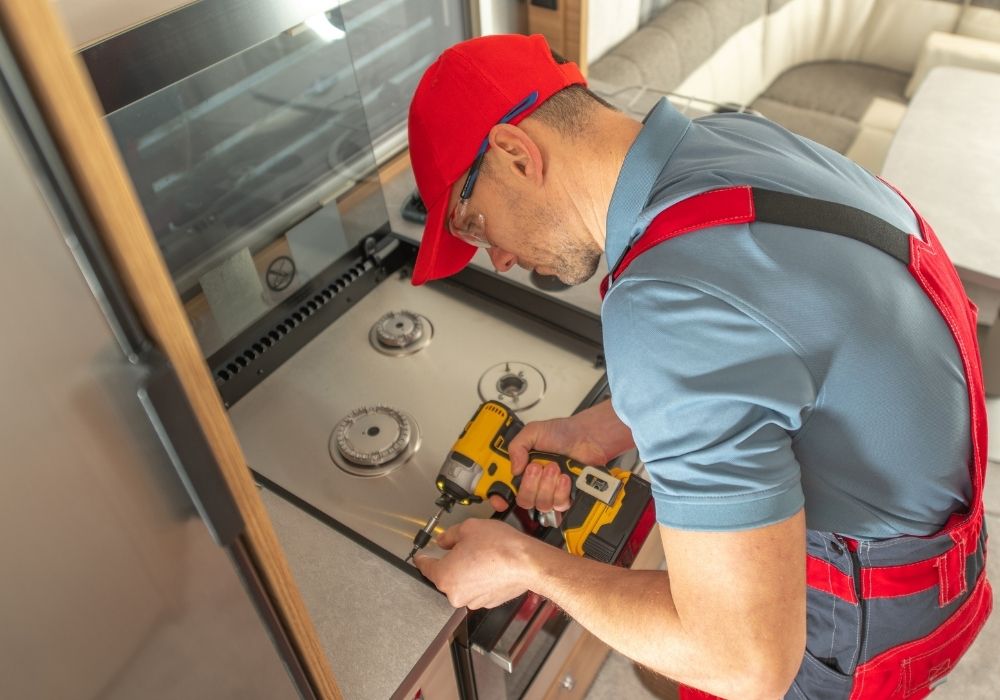
Recommended Maintenance Schedule
To ensure the longevity of your gas stove and prevent issues like red flames, it’s essential to follow a regular maintenance schedule. Here are the recommended maintenance tasks and their frequency:
- Clean the gas stove surface and burners: Once a week or as needed.
- Check and clean the burner heads and ports: Every few months.
- Inspect the gas supply line and connections for leaks: Every six months.
- Call for professional maintenance: Annually or if you notice any significant problems with your gas stove.
Call For Professional Help
While regular cleaning and maintenance can go a long way in maintaining your gas stove, there may be times when professional assistance is necessary. It’s important to know when to call for expert help. Here are a few scenarios:
- If you notice persistently red flames or uneven heating, it could indicate a more significant issue that requires professional troubleshooting.
- If you have attempted DIY cleaning methods but are still experiencing problems with your gas stove, it’s time to seek professional help.
- If you suspect a gas leak or notice a strong gas odor, immediately turn off the gas supply, open windows for ventilation, and call a licensed technician.
When Diy Methods Fail
Sometimes, despite your best efforts, DIY cleaning methods may not be sufficient to fix the red flame issue on your gas stove. In such cases, it’s important to avoid further damage by refraining from attempting complex repairs on your own.
Instead, contact a qualified professional who can accurately diagnose and address the problem.
Importance Of Professional Inspection
Regular professional inspection of your gas stove is essential to ensure its safe and efficient operation. A licensed technician can identify potential issues early on and recommend appropriate maintenance or repairs. Investing in routine inspections can help you avoid costly repairs and ensure the longevity of your gas stove.
Remember, by following the recommended cleaning and maintenance practices, you can enjoy a well-functioning gas stove with a beautiful blue flame and efficient cooking performance.
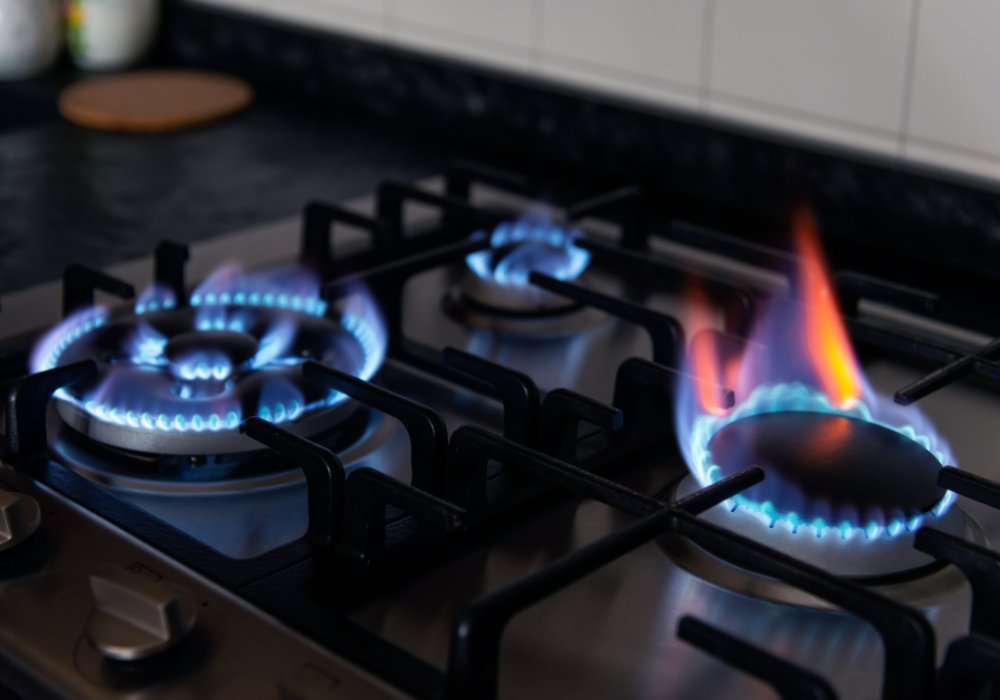
Frequently Asked Questions Of How To Fix Red Flame On Gas Stove
How Do I Fix A Gas Stove With Red Flame?
To fix a gas stove with a red flame, first check if the burner is clean and free from any debris. If it’s dirty, clean it using a soft brush. Next, adjust the air shutter to open it slightly. If the flame is still red, contact a professional to check the gas pressure and supply.
Why Is My Gas Stove Flame Red?
A red gas stove flame is a sign of incomplete combustion caused by a high level of carbon monoxide. It can be due to clogged burner ports, improper air-to-gas ratio, or low gas pressure. Reducing carbon monoxide emissions is crucial for safety, so it’s essential to fix the issue promptly.
Is It Dangerous If The Gas Stove Flame Is Red?
A red gas stove flame can be dangerous as it indicates incomplete combustion, which produces carbon monoxide. Inhaling carbon monoxide can cause dizziness, headaches, and even carbon monoxide poisoning. It is important to fix the issue and ensure proper combustion to prevent any potential health risks.
Conclusion
To wrap up, fixing a red flame on a gas stove is crucial for both safety and efficiency in your kitchen. By following the steps outlined in this blog post, you can identify and address the root cause of the red flame, such as a clogged or dirty burner or a malfunctioning regulator.
Regular maintenance and cleaning of your gas stove will ensure that it continues to operate optimally and safely. Remember to always prioritize safety and consult a professional if you are unsure or uncomfortable with any aspect of the troubleshooting process.
By taking care of your gas stove and addressing any issues promptly, you can enjoy a reliable and efficient cooking experience for years to come. So, don’t delay, start troubleshooting and fixing that red flame on your gas stove today!










